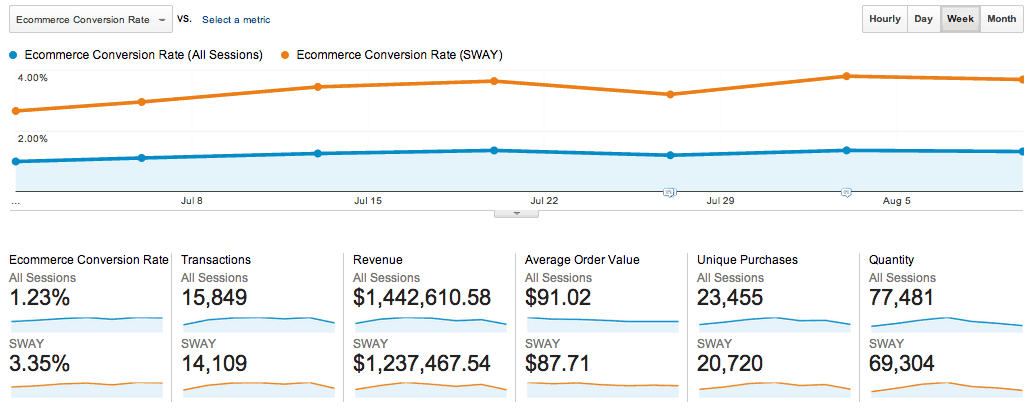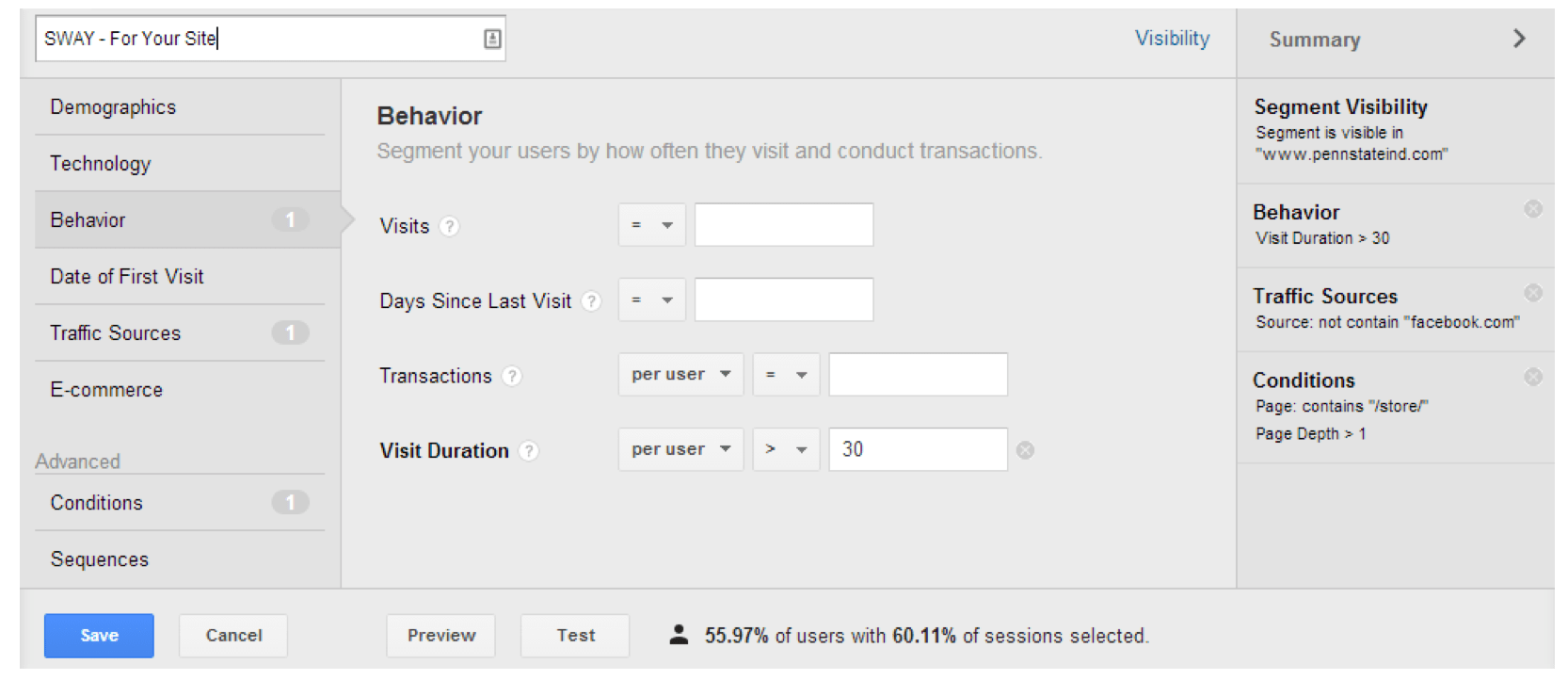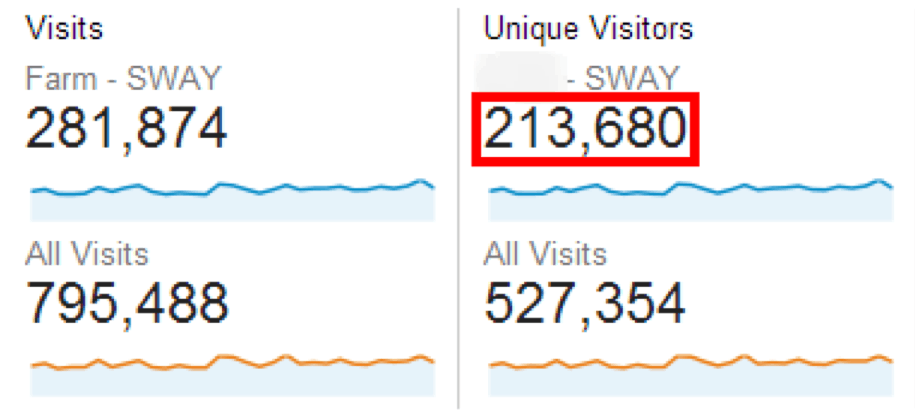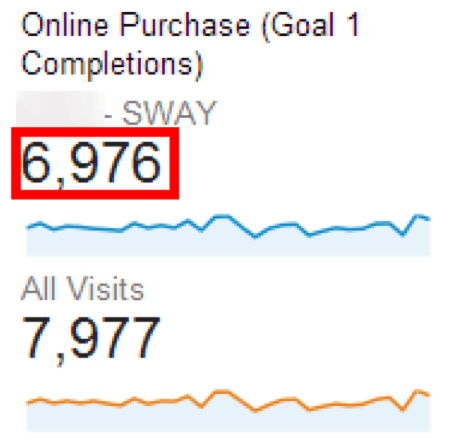I believe that you can see your real eCommerce conversion rate. Regardless of junk traffic, visits by people who’ll never buy or how often people come back before buying.
Which is the REAL eCommerce Conversion Rate?

Moving Past Basic eCommerce Conversion Rates
An eCommerce business lives and dies by its conversion rates. While it is always tempting to generate more traffic to a website, it rarely makes sense if the website can not convert visitors into paying customers or sales leads. Conversion rates, therefore, are like a website’s scorecard, and if you are going to keep score, you really need to know how the best way to go about it.
Purchase Mindsets
The problem is, there is likely a lot of traffic on your site that is diluting the actions and intentions of the buying customer, to the point where you look at the common Conversion Rate and think, “is that all I am converting?”
10 Reasons people visit sites:
- To gather information (they don’t intend to buy at that time)
- Check prices (may buy if yours is lower if you are the last site they are checking)
- To purchase
- To check inventory – most prevalent on eCommerce websites of brick and mortar retailers
- Order status checkers (makes it look like return visitors are not buying)
- To look for work
- To see what you have (browsing still happens)
- Looking for products you don’t even offer (common with niche sites)
- Your social network, including your mom
- Other reasons
Conversion Rates
Conversion Rates can, therefore, be deceptive. (See how deceptive the eCommerce Conversion Rate presented by Google Analytics can be).
But Conversion Rates are meaningful, especially if you are looking at Unique Conversions/Unique Visits, however, they are not giving you the best picture of how your site is converting visitors that are interested in buying. I call these qualified visitors.
Who is a Qualified Visitor?
A visitor is qualified after they show that they are more than just a browser, a job seeker, a friend or someone looking for a product you don’t have. While there is no perfect way to identify these people statistically, a good start is identifying pages people might visit if they truly are a prospective customer or lead.
You may want to start with something this simple:
- INCLUDE visitors to your product pages AND have visited AT LEAST 2 pages on the site AND stayed on site for at least 30 seconds
- EXCLUDE visitors who went to your site’s careers section
- EXCLUDE visitors from traffic sources that have not converted in the last 30 days
Here is how you would create a SWAY Segment in Google Analytics.

SWAY (Persuasion) Rate
Now that you have your Qualified Visitors (QV), you can start calculating the rate at which these visitors convert into purchases. I call this the SWAY Rate. For us, this is the most important Conversion Rate on a website and the one we focus the most on lifting.
Calculate the SWAY Rate
So your common “Conversion Rate” (Unique Purchases/Unique Visitors) does not tell you about nine out of the 10 visitor types above. That is why you need to calculate the SWAY Segment applied. Once you have this, you will see it correlates much closer to your sales volume than the overall conversion rate.
The SWAY Rate Formula is below:
(Number of Orders/Q-Visitors) Where is a Q-Visitor is the numbers of unique visitors with your SWAY advanced segment applied? Here is an example:
Take the number of the Qualified people on your site.

Then take the rate of people who added to their shopping cart, and actually ordered.

Now, divide visitors into purchases and multiply by 100 to get the SWAY Rate.
(6,976 Purchases/213,680 Q-Visitors) *100 = 3.26(%)
Example
Here is an example of a brick and mortar retailer’s eCommerce site. While their overall conversion rate has increased just 42% over 2 years of optimization, their SWAY (real) conversion rate has increased 105%. The reason for the difference: they started Display Ads, improved PPC ROI at the expense of the PPC Conversion Rate – which is awesome! and increased traffic from outside their region, which converts lower due to lack of brand awareness, plus other stuff). But, when we look at the SWAY rate, we see that qualified visitors converted much better.

Note: You might notice that the checkout funnel micro conversion rate increased from 45.47% to 80.82% (77% improvement). Interestingly enough (not surprising to us in our experience though), this improvement happened without ANY changes to the Checkout flow. Zero, Nata, Zip! This happening solely because the experience before the Checkout improved and people entered the Checkout flow with more confidence. We call this the Straw Effect (where the Checkout was simply the straw that broke the camels back).
Now, Calculate your Own
I hope this helps you cut down the “noise” of what you measure on your sites, and gives you something more meaningful to measure. This should allow you to better measure how well you are persuading those who are more ready to buy. Don’t forget, you may need to work on getting more Q-Visitors, especially if your bounce rate is high.
I know it is not as “Simple” as website conversion rates and the people you present your metrics to might want simple. Just remind them that accurate metrics are simple metrics, and think about how long it would take to explain to them why sales are up and the site conversion rate is down (it will take at least one hour, and a white board, trust me).











there is no “unique visitor” metric in GA
Right you are! Its called users now (and before was Visitors). I wish Google would stop updating GA after I do a post, oh well.
Conversion is the final thing that any business aim at. And every business must know the right way to calculate conversion of the website. So thanks for providing the information to calculate the conversion rate of the website.
Thank you for this article Keith, this is definitely getting forwarded to a client that has my hair turning grey and falling out. I have been talking till I’m blue in the face trying to explain that we need to setup goals to track actual metrics that matter, such as what you discuss.
I believe they’re scared of the numbers, because they’re all about traffic, traffic, traffic and I argue that traffic is not a measurement that means anything, conversions are, they’re everything.
Ok, enough ranting, great post!
Hello Everyone,
Just updated this post to be a bit better since it seems to be so popular.
Great post, Keith.
I used to only focus on traffic and how many visitors per day. But now I started to realize “Conversion” is way more important than just traffic. Your conversion rate calculation definitely give me more lights on this topic.
Thanks for sharing.
Thanks Keith, I’ve really learned some things from this post. I didn’t keep track of my conversion rates like you guys do (I mean with “qualified visitors”. . I will copy this idea of qualified visitors. Really interesting.
Thanks
Really interesting info about calculating one’s website conversions. Lots of new info to learn from. Terrific comments.
Thanks for this Mat – one of the most useful / practical articles I’ve seen on actual conversions! I can’t seem to find a way to measure our website accurately, which is for consultancy, and therefore doesn’t have a cart or transaction page. How would you then redefine the Sway Rate, without that transactional data?
Hello Emma,
For you, I would create a core metric sheet to track engagement metrics to start. Then I would implement phone tracking so you could see what page people are calling from (its like having a goal on every page, and integrates with Google Analytics). We like Call Rail for this.
For you, I might suggest adding a contact form (for people after hours or who prefer it to phone).
Hope that helps!
Very interesting article Mat! It is true that most of the traffic on a website is often the result of the actions and intentions of a buying customer. Looking forward to your new posts!
Hi Keith,
Thanks for your email – I have passed it onto one of my colleagues in a different department.
Kind Regards,
Rich
Nice post – thanks Mat. Out of interest, are there pages other than product pages that could be used as a Q-Page?
Yes, in fact, you really need to CUSTOM define the pages, or rather segment you use each site. The best way to do this is to really define a segment of users who visit this or that page, perhaps more than once, and had som many page views, or came back to the site, or have an average time on page over this amount etc etc. Once you have this segment, and are counting all the pageviews or visitors (you can do either), then you know qho qualifies to be persuaded. I tried to keep it simple for the post of course.
Unfortunately not Mat…I can make orders via web, but they don’t offer access to their inventory in real time.
I have an ecommerce store and my conversions are very low due to the fact that I can’t collect payment right away. I have to check first if the product is in my supplier’s stock and then get the payment.
That sucks. You need real-time inventory. Does your supplier offer an API to get this?
Conversion rates have always been very difficult for me to calculate. Thank for your post!
Your definition of a qualified visitor is really easy to understand and also helpful to see if people coming to our sites are just occasional visitors or people really interested in our information, product or service.
I have read closely what you call the Sway rate and I find it a very interesting concept. Now matter how you name it, it is very important to have a certain idea of which percentage of your vists to your site are really turned into money.
Thank you very much for the post. I have always had doubts regarding how to calculate conversion rates and after reading your explanation everything seems absolutely clear. Thanks!
Interesting post, might wanna incorporate this in our https://www.Reedge.com metrics.
Thanks Dennis. I think I came across your site before when I had little time (ok, I still don’t have much time). Thanks for posting and reminding me to check you guys out. I’m always looking for “that tool” that will bring the sites I work closer to perfection.
Keith
In my opinion,successful conversions are interpreted differently by individual marketers, advertisers, and content creators.
Hey Christian,
Thanks for your comment. Could you elaborate for everyone? I think I follow but don’t want to assume.